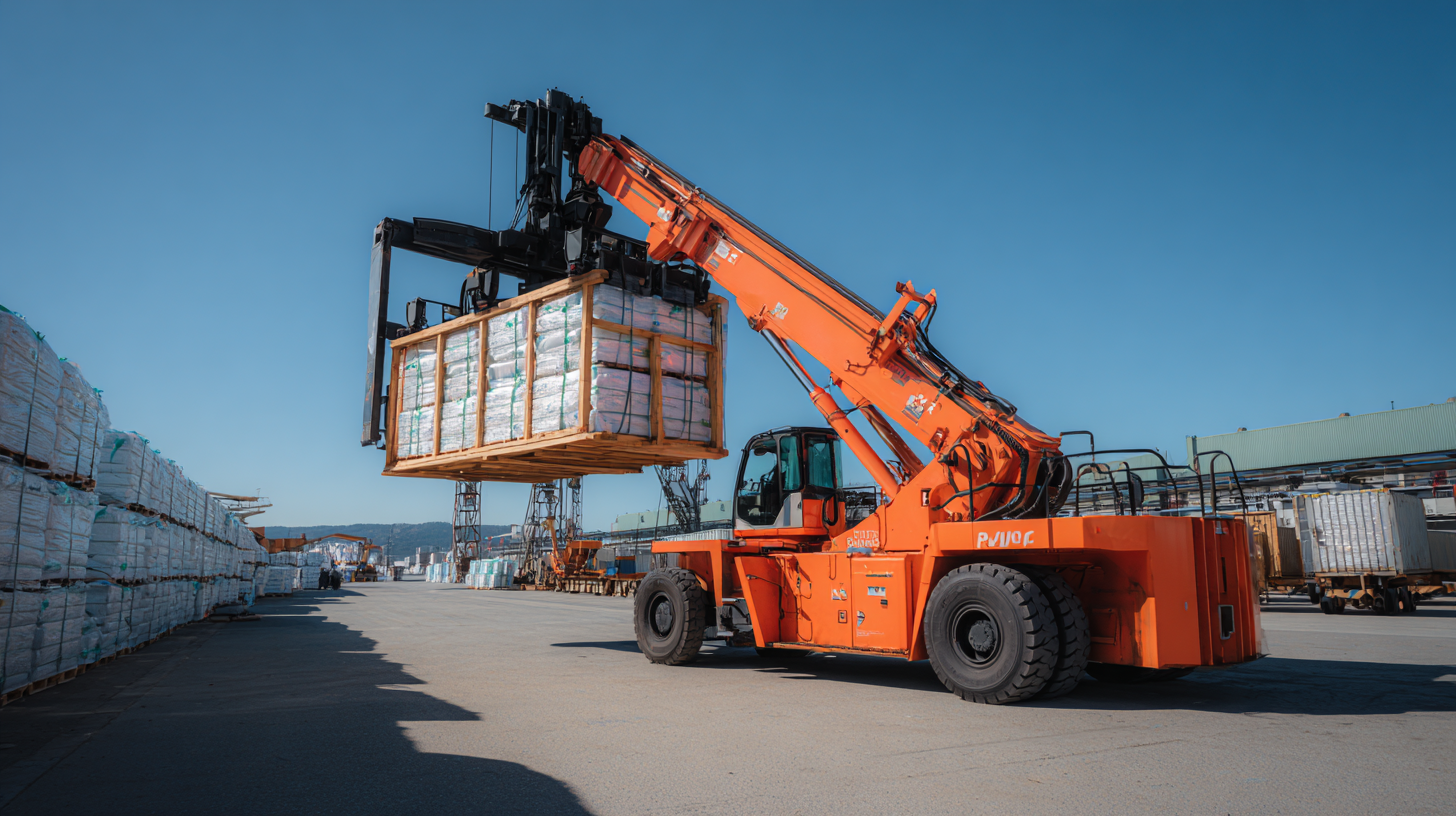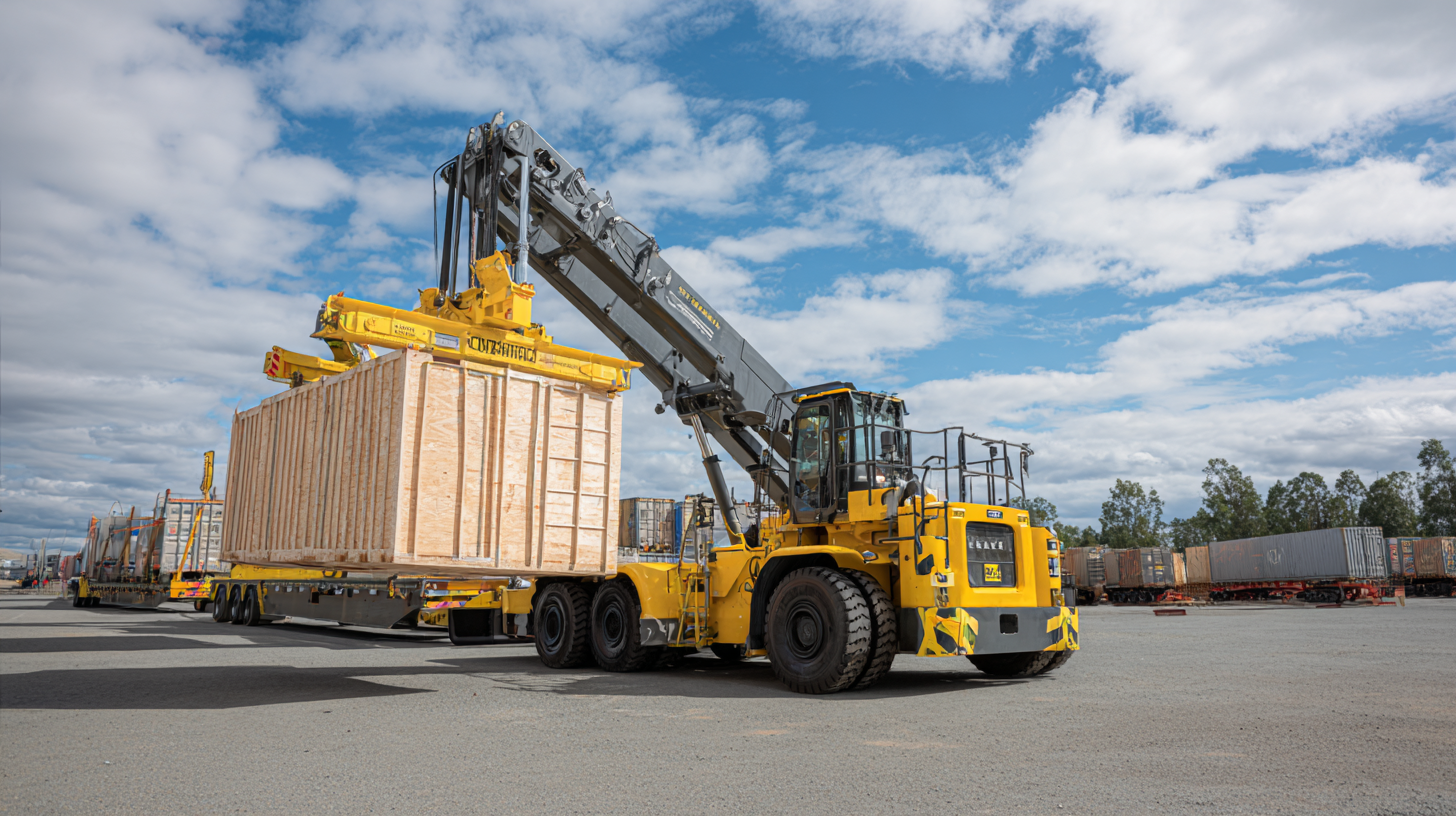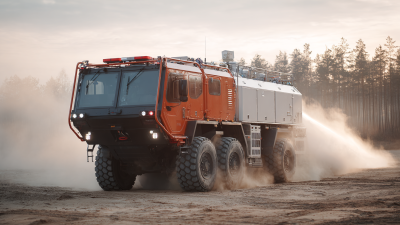Leave Your Message
-
Phone
-
E-mail
-
WhatsApp
In today's fast-paced industrial landscape, optimizing material handling efficiency is paramount for businesses seeking to maintain a competitive edge. Among the innovative solutions transforming this sector, the Side Loader Crane stands out, offering unparalleled advantages in the movement and organization of goods. According to a recent report by industry analysts, the global material handling equipment market is projected to reach $210 billion by 2026, fueled by the growing demand for automation and enhanced operational efficiency.

Side Loader Cranes, specifically designed to handle long and bulky loads with ease, significantly reduce labor costs and improve workflow efficiency. With the ability to navigate tight spaces and maneuver heavy materials seamlessly, these cranes are becoming essential tools across various industries. As businesses increasingly recognize the value of implementing advanced material handling systems, the benefits of Side Loader Cranes are being heralded as a game-changer in productivity and safety standards.
Side loader cranes are reshaping the landscape of material handling with their innovative design features, significantly enhancing performance across various industries. One major advantage of these cranes is their ability to operate in confined spaces, making them ideal for urban environments and warehouse applications. According to a report by Industrial Crane and Hoist Magazine, side loader cranes can improve space utilization by up to 30%, which is critical for businesses looking to maximize their operational efficiency.
Another key design feature is the low center of gravity, which provides increased stability during operation. This enhances safety and reduces the likelihood of accidents, leading to a reduction in downtime. In fact, studies indicate that facilities utilizing side loader cranes experience up to 25% fewer workplace incidents, which not only improves safety records but also lowers insurance costs.
**Tips:** When considering the implementation of side loader cranes, assess the specific needs of your operation to choose the right model. Regular maintenance is critical to harnessing the full potential of these machines and preventing unexpected breakdowns. Additionally, train operators extensively to ensure efficient and safe handling of materials, maximizing the cranes' design benefits.

The implementation of improved safety measures in side loader crane operations has significantly transformed the landscape of material handling. With features such as enhanced visibility, operator training programs, and advanced technology integration, side loader cranes have become safer to use, reducing the risk of accidents and injuries on job sites. These cranes often come equipped with larger mirrors and cameras, allowing operators to maintain a clear view of their surroundings, which is crucial in busy environments where blind spots are common.
In addition to better visibility, rigorous training and certification programs for operators have been put in place, emphasizing the importance of safe handling practices. These initiatives ensure that personnel are well-versed in the specific operational quirks of side loader cranes, allowing for a more knowledgeable workforce better equipped to respond to potential hazards. Furthermore, regular maintenance checks and updates to equipment also enhance safety, as they ensure that cranes function smoothly and efficiently, contributing to a safer working environment overall.
| Aspect | Details | Impact |
|---|---|---|
| Increased Load Capacity | Can handle larger loads compared to traditional cranes | Reduces the number of trips needed for transportation |
| Modular Design | Flexible configurations for varying job sizes | Adapts quickly to different material handling needs |
| Enhanced Safety Features | Includes safety sensors and automatic shutoff | Minimizes risk of accidents and injuries |
| Operator Convenience | User-friendly controls and visibility enhancements | Increases productivity and reduces operator fatigue |
| Eco-Friendly Operations | Utilization of energy-efficient technologies | Reduces carbon footprint and operating costs |
| Improved Maneuverability | Can navigate tight spaces more effectively | Enhances workflow in congested environments |
| Comprehensive Training Programs | Focus on safe operation practices for operators | Boosts safety awareness and expertise |
Side loader cranes have emerged as a game-changing technology in material handling, offering distinct advantages over traditional systems. One of the key benefits is their ability to handle long and heavy loads more efficiently. According to a report by the Material Handling Industry of America, side loader cranes can increase productivity by up to 30% when compared to conventional forklifts. This efficiency is primarily due to their unique design, which allows for lateral movement, enabling operators to maneuver in tighter spaces without compromising stability or safety.

In addition to improved handling capabilities, side loader cranes also reduce the risk of product damage. Traditional lifting systems often require multiple handling steps, increasing the chances of accidents and product loss. A study conducted by the National Institute of Standards and Technology found that implementing side loader cranes minimizes these risks, leading to a 25% decrease in damage-related costs. Furthermore, their ergonomic design enhances operator comfort and reduces fatigue, ultimately contributing to a more efficient workflow. Such advantages illustrate why industries looking to optimize their material handling processes are increasingly investing in side loader crane technology.
Side loader cranes have emerged as a game-changer in the realm of material handling. One of their standout features is their ability to significantly reduce operational downtime. By efficiently moving materials in tight spaces and handling large, bulky loads with precision, these cranes streamline the logistics involved in warehousing and production. This efficiency not only enhances productivity but also minimizes the risk of accidents, which can lead to costly shutdowns.
However, the impact of side loader cranes on operational efficiency goes beyond just increased productivity. The ongoing challenges surrounding crane failures and collapses can lead to significant disruptions in business operations. Proper maintenance and awareness of potential failure points, as highlighted in recent studies, are crucial. By integrating advanced side loader technology, companies can mitigate the risks associated with traditional crane operations, leading to a safer working environment and a dramatic reduction in downtime caused by equipment malfunction. Emphasizing reliable equipment like side loader cranes ensures that businesses can maintain their workflow and uphold safety standards in material handling.
The evolution of side loader crane technology is transforming material handling efficiency across various industries. According to a report by Global Market Insights, the side loader crane market is projected to reach $1.2 billion by 2025, highlighting the increasing demand for versatile lifting solutions. Enhanced features such as improved hydraulic systems and advanced automation capabilities are enabling side loader cranes to operate with greater precision and speed, ultimately reducing downtime and operational costs.
In line with these advancements, businesses are leveraging side loaders equipped with IoT technology, allowing operators to monitor performance in real time and optimize loading processes. This trend not only increases efficiency but also enhances safety protocols, as cranes can be programmed to adhere to strict weight limits and operational parameters. Additionally, incorporating electric drive systems can reduce energy consumption by up to 30%, supporting sustainability efforts in material handling practices.
Tip: When choosing a side loader crane, consider one with advanced safety features, such as overload detection systems and automated shut-off mechanisms, to safeguard your operation. Furthermore, select models that offer easy maintenance access, ensuring your equipment remains in optimal condition and minimizing downtime.






